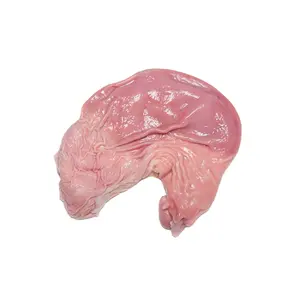Understanding the Large Intestine Small: An Overview
The large intestine, also known as the colon, plays a crucial role in the digestive system. When discussing the "large intestine small," it’s essential to acknowledge the significance of both large intestines and small intestines that work in tandem to process food, absorb nutrients, and eliminate waste efficiently. The large intestine is typically around 5 feet long while the small intestine averages about 22 feet, yet they complement each other in the digestive journey.
Types of Issues Related to the Large Intestine Small
Several disorders can affect the function of both the large and small intestines. Understanding these types allows for better awareness and management:
- Inflammatory Bowel Disease (IBD): Chronic inflammation can affect both the small and large intestines, leading to severe discomfort and requiring medical attention.
- Colorectal Cancer: This can develop in the large intestine; early detection is crucial for successful treatment.
- Diverticulitis: This is prevalent in the large intestine where pouches form, possibly leading to infection.
- Small Intestinal Bacterial Overgrowth (SIBO): An imbalance of bacteria can disrupt the digestive process in the small intestine, impacting nutrient absorption.
Importance of Function and Feature of the Large Intestine Small
The functionality of the large and small intestines is critical to your overall health. Here are the main features:
- Absorption of Water: The large intestine primarily absorbs excess water from undigested food, turning it into solid waste.
- Nutrient Absorption: The small intestine is where most nutrient absorption occurs, vital for providing the body with essential vitamins and minerals.
- Bacterial Fermentation: The large intestine houses beneficial bacteria that help ferment undigested food, producing short-chain fatty acids beneficial to health.
- Waste Storage and Elimination: The primary role of the large intestine is to store waste until it can be eliminated from the body, maintaining homeostasis.
Applications and Advantages of a Healthy Large and Small Intestine
Maintaining the health and functionality of both the large and small intestines can significantly improve quality of life. Here’s how:
- Disease Prevention: Regular screening for colorectal cancer and awareness of digestive disorders can lead to early intervention and treatment.
- Enhanced Digestion: A healthy gut promotes efficient digestion and maximizes nutrient absorption, ensuring optimal energy levels.
- Gut-Brain Connection: A well-functioning digestive system can positively influence mental health, reducing anxiety and promoting overall well-being.
- Detoxification: The intestines help in eliminating toxins from food and the environment, sustaining one’s health.























































































































































































